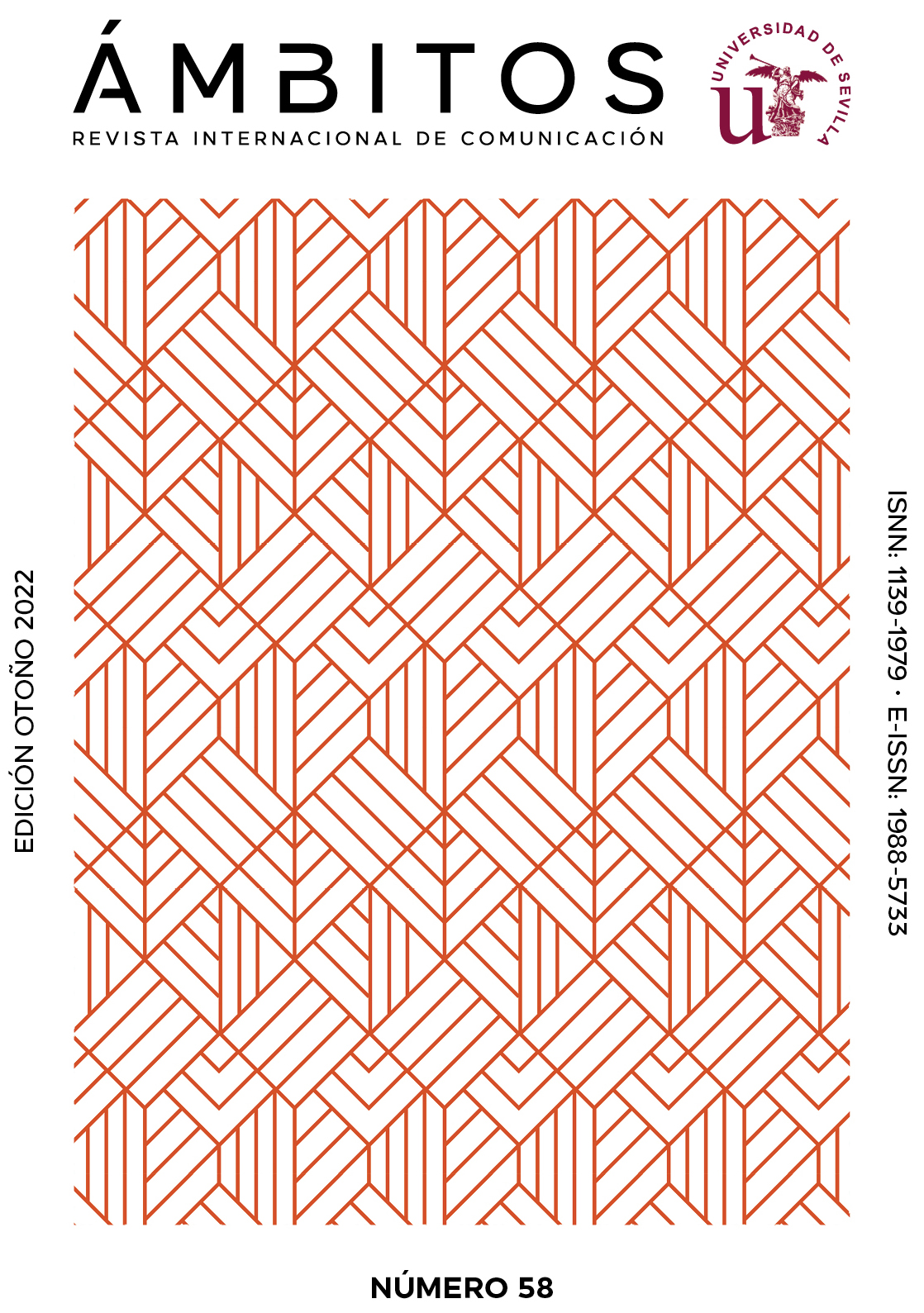Spectacularization in the print media: analysis of specialized radio magazines
DOI:
https://doi.org/10.12795/Ambitos.2022.i58.09Palabras clave:
magazines, radio, spectacularization, communication history, cultureResumen
The article aims to analyze the spectacularization in radio magazines in Brazil in the 1920s, 1930s, 1940s and 1950s. With this theoretical basis, the qualitative method was used for data collection, due to its characteristics that fit the theme of work of historical rescue of communication, particularly of the printed medium. We opted for qualitative research because it has unique steps in data analysis and makes use of different research strategies. Qualitative procedures show different perspectives and we think about the media effects in this context. The research was carried out at the Museu da Imagem e do Som, Arquivo Público and Biblioteca Mário de Andrade in São Paulo and also at the National Library of Rio de Janeiro, among other centers. The research problem lies in the effects that this type of production causes on society and as a result we conclude that the magazines were improving in editorial quality but, with a central focus on showbiz and the market, it led to the trivialization of culture, the generalization of frivolity and the scandalous journalism, which unfortunately persists in the media to this day. The research contributed to the understanding that radio and magazines, where one is a vector of growth of the other, were being built for the spectacularization in society and this at various times has shown to have very dark effects, as it transformed, for example, the political discussion into entertainment and journalism in irresponsibility.
Descargas
Citas
Alberti, V. (2013). Oral history handbook. FGV Publisher
Amado, J. y Ferreira, M. M. (2006) (1996). Uses and abuses of oral history. FGV Publisher
Calabre, L. (2002). The radio age. Zahar
Cantero, T. M. y Comegno, W. (2013). The São Paulo radio dynasty. ABR Publisher
Creswell, J. W. (2010). Research project. Qualitative, quantitative and mixed method. Artmed
D’Ângelo, N. (2013, July 22 th- 26th) Intellectuals, radio magazines and popular music in Brazil: the written radio – 1924-1954 [Symposium] XXVII National History Symposium. National History Association. Rio de Janeiro, Brazil
Debord, G. (1997). The society of the spectacle: comments on the society of the spectacle. Counterpoint
Faour, R. (2002). Radio Magazine. Relume-Dumará
Haussen, D. y Bacchi, C. (September 2001) Radio Magazine through its editorials (1950s) [Symposium] XXIV Intercom–Brazilian Society for Interdisciplinary Communication Studies, UNIDERP, Brazil
Llosa, M.V. (2013). The civilization of the spectacle. Objective.
Locke, I.F., Spirduso, W.W. y Silverman, S.J. (2007), Proposals that work: A guide for planning dissertations and grant proposals (5th ed.), Thousand Oaks, Sage.
Maranhao Filho, L. (1991). Radio memory. Jangada
Ortiz, R. (1994). The modern Brazilian tradition: Brazilian culture and the cultural industry. (5th ed). Brasiliense.
Saroldi, L.C. y Moreira, S.V. (2005). National Radio, Brazil in tune. Funarte Publisher
Vaz Filho, P. S. (2009). The history of Brazilian radio from the perspective of 20th century newspapers and magazines [Master’s Dissertation, Cásper Libero College]. https://bit.ly/3BWFZCu
Weber, M.H. (2011). Public space and event: from the public event to the political-media spectacle. Kaleidoscope, Journal of Communication and Culture, 10, 189-203. https://bit.ly/3M0dqIU
Descargas
Publicado
Cómo citar
Número
Sección
Licencia
Derechos de autor 2022 Antonio Adami, Lúcia Moreira Dias

Esta obra está bajo una licencia internacional Creative Commons Atribución-NoComercial-CompartirIgual 4.0.
Ámbitos. Revista Internacional de Comunicación es una revista de acceso abierto, lo que significa que todo su contenido está disponible gratuitamente para el usuario o su institución. Los usuarios pueden leer, descargar, copiar, distribuir, imprimir, buscar o enlazar con el texto completo de los artículos, o utilizarlos para cualquier otro fin lícito, sin solicitar permiso previo al editor o al autor. Esta definición de acceso abierto se ajusta a la Iniciativa de Acceso Abierto de Budapest (BOAI).

A menos que se indique lo contrario, todo el contenido de la edición electrónica se distribuye bajo una " licencia internacional Creative Commons Attribution-NonCommercial-ShareAlike 4.0 ". Puede consultar la versión informativa y el texto legal de la licencia aquí. Esto debe indicarse expresamente de esta manera cuando sea necesario.
En caso de aceptación del manuscrito, los autores ceden los derechos de la obra para su publicación a Ámbitos. Revista Internacional de Comunicación bajo el contrato de licencia Reconocimiento-NoComercial-CompartirIgual 4.0 Internacional (CC BY-NC-SA 4.0). Los autores conservan los derechos de autor y terceros están autorizados a copiar, distribuir y hacer uso de la obra, siempre que cumplan con los términos y condiciones establecidos en la licencia.
- Citar la autoría y la fuente original de publicación (revista, editorial y URL de la obra).
- No los utilice con fines comerciales.
- Si remezcla, transforma o crea a partir del material, debe publicar sus contribuciones bajo la misma licencia que el original.
Se puede encontrar más información en https://creativecommons.org/licenses/by-nc-sa/4.0/deed.es



















